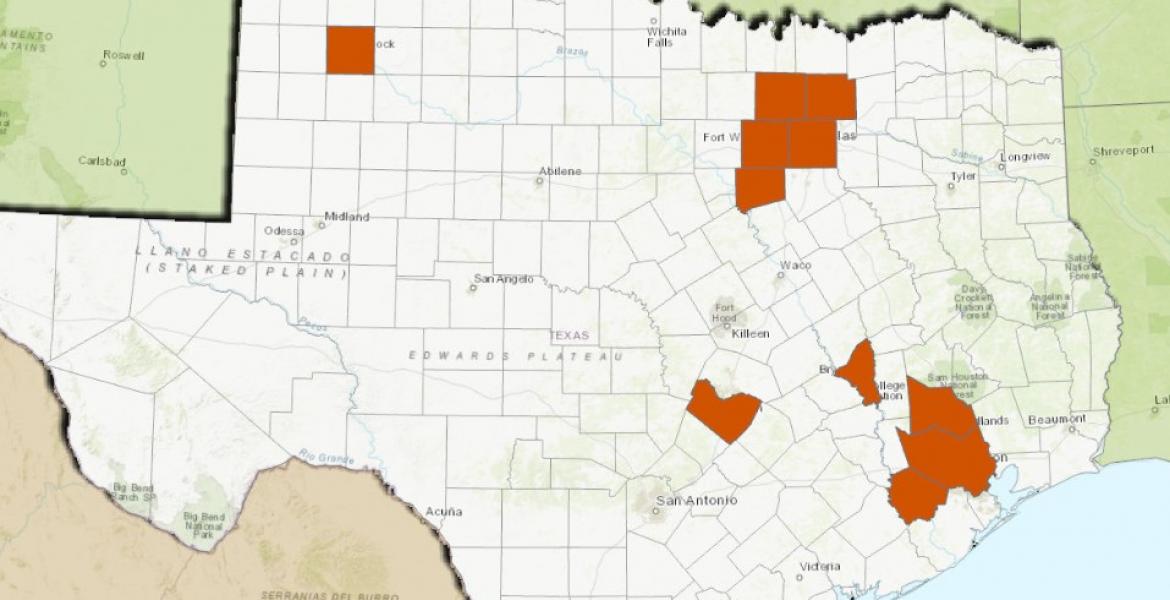AUSTIN – The Texas Parks and Wildlife Commission Thursday heard testimony from staff and invited guests on a variety of issues relating to Chronic Wasting Disease during a special meeting at Texas Parks and Wildlife Headquarters.
Presenters provided background, information, concerns and options to the commission in response to the recent discovery of CWD in a two-year-old white-tailed deer in a Medina County deer breeding facility. Included in the testimony were possible measures to further minimize the risk of CWD spreading into Texas’ free-ranging white-tailed deer herd, and to protect the captive deer breeding industry.
Invited testimony was provided by Dr. Walt Cook, former Wyoming State Veterinarian and current Wildlife Population Health Veterinarian at Texas A&M University; Dr. Andy Schwartz, Assistant Executive Director with the Texas Animal Health Commission; Clayton Wolf, Wildlife Division Director for the Texas Parks and Wildlife Department; Chase Clark, President of the Texas Deer Association; David Yeates, Chief Executive Officer of the Texas Wildlife Association; Chris Timmons, Deer Breeders Corp. president; and Dr. Roel Lopez, president of the Texas Chapter-The Wildlife Society.
Following the presentations, TPW Commission Chairman Dan A. Hughes Jr., offered the following statement:
“First and foremost, I want to thank everyone for being with us here today and for your interest in this important issue. Audio from today’s meeting will be available online over the next couple of days. I have also asked staff to make the powerpoints presented today available on the TPWD website for everyone who wasn’t in the room today to review.
It is important for all of us to remember that Chronic Wasting Disease doesn’t pick sides. It doesn’t make alliances. It affects all of us in this room. We (staff, commission, hunters, breeders, etc.) are all connected to this. I believe that we owe it to the people of Texas and the more than 4 million free-ranging and captive deer, to do everything we can to contain this threat and ensure it doesn’t spread. It is important that we hear and consider all perspectives.
I want to thank TPWD staff and the Texas Animal Health Commission for the countless hours and tireless efforts spent to assemble, review and consider an overwhelming amount of information as they work to make the best recommendations for moving forward. We want to get business back to normal as soon as possible, as well. But, it is important that we do so in a manner that smart and safe for everyone involved. Texas is going to be the gold-standard for how to appropriately respond to Chronic Wasting Disease. We want to use every opportunity to learn from this event as we proceed.
In moving forward, it is crucial that we not lose sight of the three primary goals of any response:
- Minimize CWD risks to the wild and captive white-tailed deer, mule deer, and other susceptible species in Texas.
- Establish and maintain support for prudent CWD management with hunters, landowners, and other stakeholders.
- Minimize direct and indirect impacts of CWD to hunting, hunting related economies, and conservation in Texas.
- No decision will be perfect. Each possible decision involves some level of risk, and based on the information heard today, I would like to encourage staff to:
- Support the CWD Working Group’s recommendation to initially test those animals deemed highest-risk at the index facility as expeditiously as possible.
- Assess the risk on all other breeder facilities and place a premium on allowing TAHC Certified Herds and wholly-disconnected facilities to resume movement of deer soon.
- Use the best available science, and don’t be afraid to innovate wherever possible
Ultimately, I would like for us to not only be particularly sensitive to minimizing impacts to breeder facilities but also minimizing the risk to the state’s free-ranging deer herd which is critically important to Texas’ deer economy and other landowners and hunters across the state.”
Audio from Thursday’s Special Commission meeting can be found on the TPWD website.
Subscribe to the LIVE! Daily
Required






Post a comment to this article here: